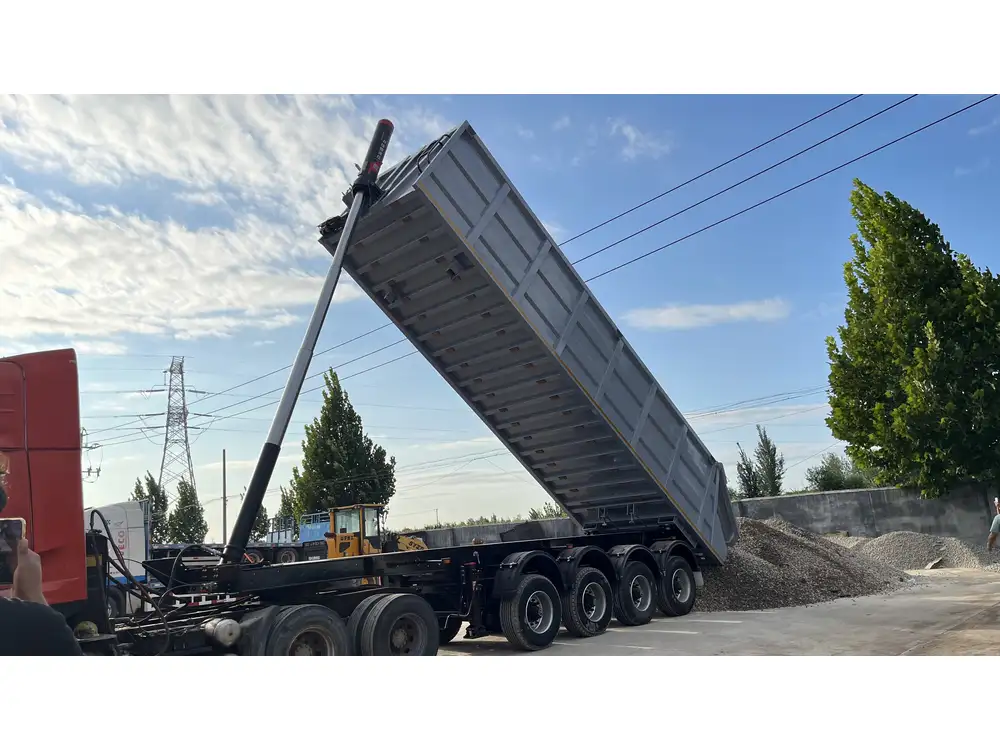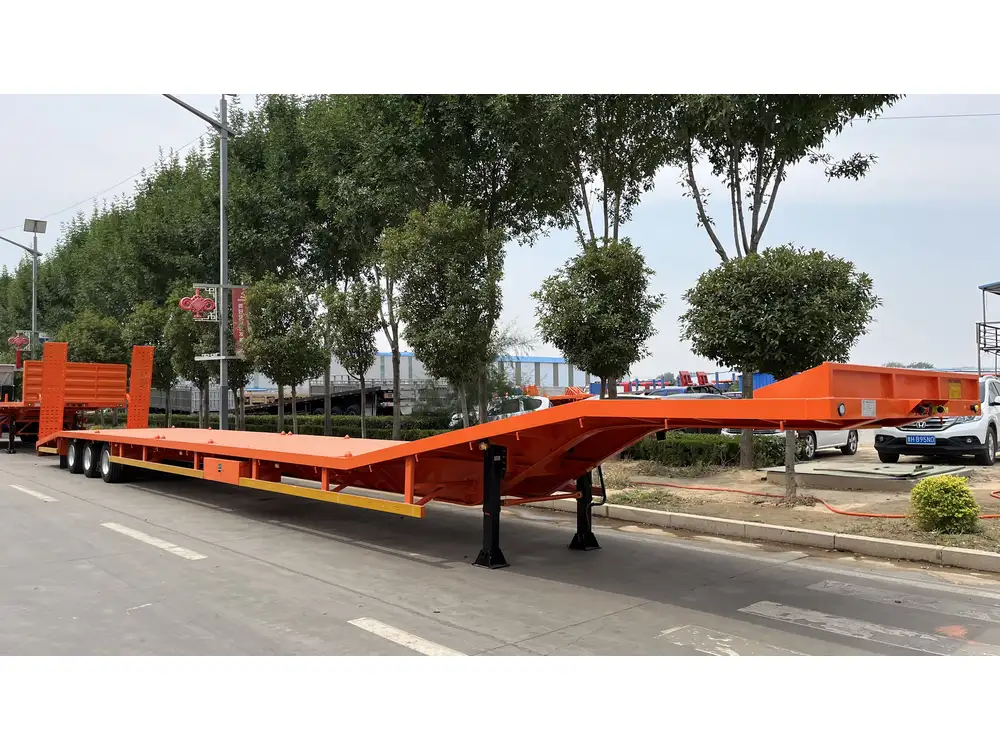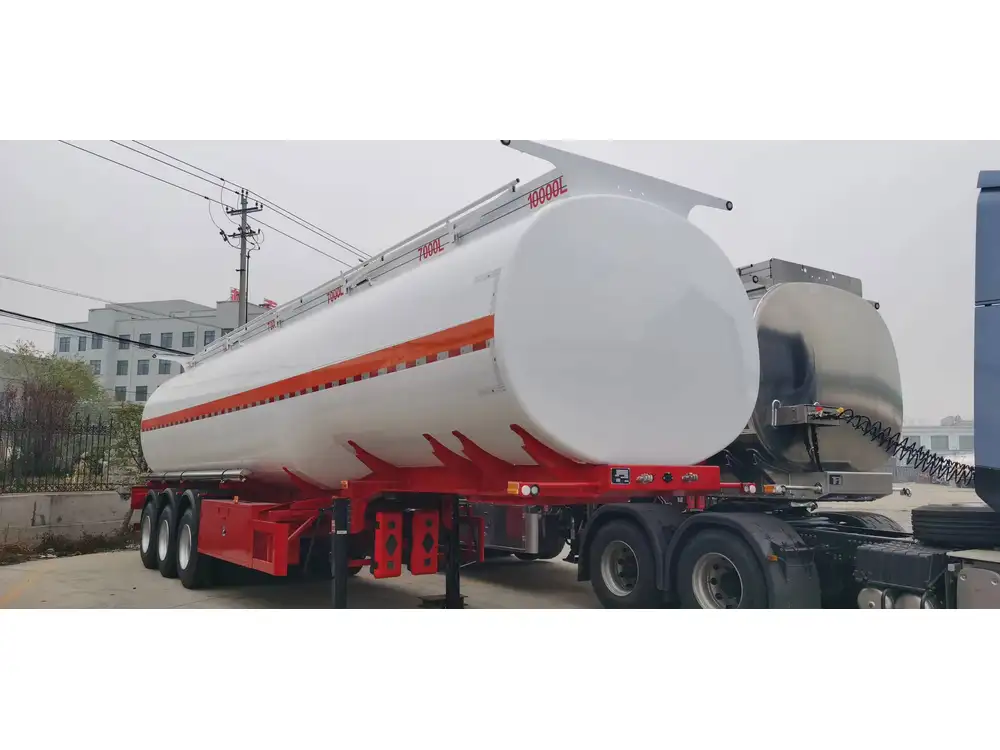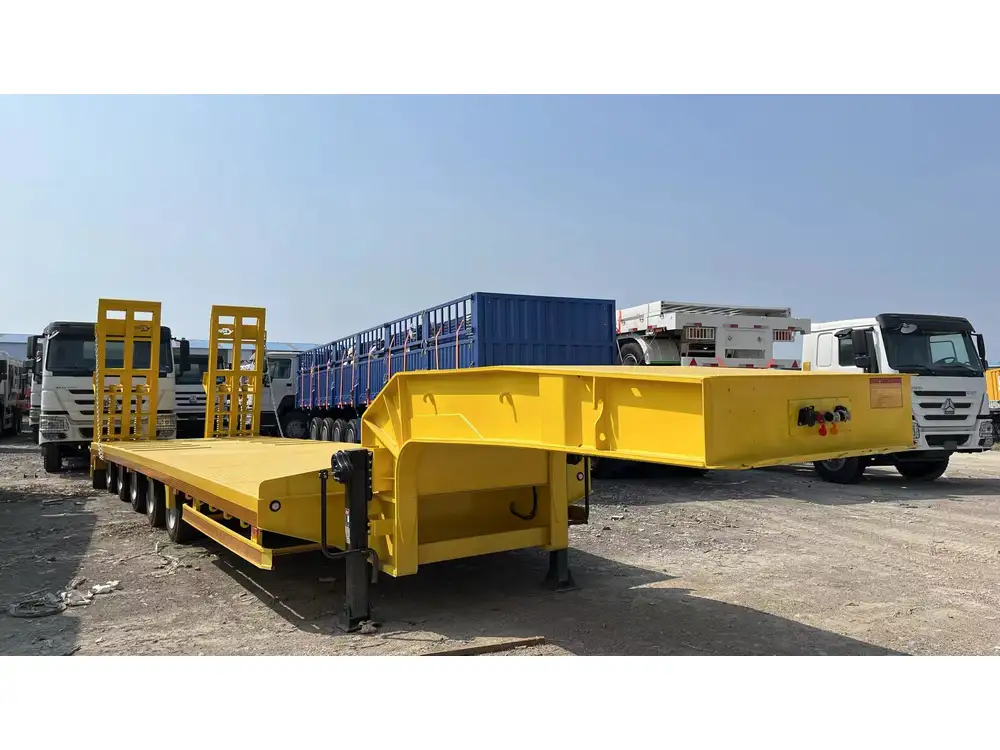When it comes to the transportation industry, the semi-trailer stands as a crucial player in ensuring goods are moved efficiently and safely across vast distances. A key inquiry that arises among manufacturers, logistics providers, and consumers is: What is the height of a normal semi-trailer? This article delves into the intricacies of semi-trailer heights, exploring normative specifications, industry standards, and factors influencing trailer design.
What Defines a Typical Semi-Trailer Height?
Standard Dimensions
The height of a typical semi-trailer is generally around 13 feet 6 inches (approximately 4.1 meters). This measurement is recognized as the maximum permissible height on interstate highways within the United States. However, it’s essential to understand that this is not a fixed number.
| Trailer Type | Average Height |
|---|---|
| Standard Dry Van | 13′ 6″ (4.1m) |
| Reefer Trucks | 13′ 6″ (4.1m) |
| Flatbed Trailers | 11′ 0″ (3.4m) |
| Tanker Trailers | 12′ 0″ (3.7m) |
| Car Haulers | 13′ 6″ (4.1m) |
Understanding these variations is important, as certain types of trailers serve unique functions, leading to differences in their structural heights.

Regulation Compliance
In the United States, the Federal Highway Administration (FHWA) stipulates height regulations to ensure road safety. With the maximum height set at 13′ 6″, trailers exceeding this dimension may face challenges, particularly when navigating underpasses, bridges, or through tunnels. This regulation earns its importance not merely from a legal standpoint, but from demographic and logistical perspectives—bridging the gap between accessibility and design necessity.
International Height Standards
Height standards vary globally, reflecting local regulations and road conditions. For instance:
- Europe: The standard height for a semi-trailer is typically around 4 meters (approximately 13 feet 1 inch).
- Australia: The Australian Regulations allow for a maximum height of 4.3 meters (approximately 14 feet 1 inch).
Knowledge of international regulations is vital for manufacturers aiming to export their trailers.
Factors Influencing Semi-Trailer Height

Design Specifications
Trailer Purpose: The intended use significantly impacts height. For example, refrigerated units (reefers) require insulation to maintain temperature, consequently affecting overall dimensions.
Load Type: Trailers designed for heavy or bulky cargo may have structural components that necessitate a higher profile to accommodate loading mechanisms (e.g., hydraulic lifts).
Aerodynamic Efficiency: Some manufacturers have begun to incorporate design elements that minimize drag, persuading height adjustments for optimizing fuel efficiency.
Regulations and Road Constraints
Interstate Compliance: Different states may enforce unique regulations about maximum trailer heights; hence, consistent knowledge of state statutes can prevent legal complications.
Urban vs Rural Transport: Urban areas may have lower clearance standards than rural settings, influencing trailer specifications.
Road Infrastructure: Factors like the presence of overpasses or bridges can curtail the feasibility of taller trailers on specific routes.
Trailer Construction Material
The choice of materials in semi-trailer construction can also introduce variances in height. For instance, aluminum trailers may appear slimmer than those made from steel, reflecting differences in design while retaining structural integrity.

Typical Semi-Trailer Types and Their Heights
To cover specific examples, let’s outline common trailer configurations alongside their average heights:
| Semi-Trailer Type | Average Height | Description |
|---|---|---|
| Standard Dry Van | 13′ 6″ (4.1m) | The most common type for general cargo, closed box design. |
| Refrigerated Van | 13′ 6″ (4.1m) | Insulated trailers used for temperature-sensitive goods. |
| Flatbed Trailer | 11′ 0″ (3.4m) | Open-air design for easy loading/unloading of bulky items. |
| Tanker Trailer | 12′ 0″ (3.7m) | Designed for liquid transport, often braced to maintain stability. |
| Car Hauler | 13′ 6″ (4.1m) | Multi-level designs used for transporting vehicles. |
Understanding these distinctions aids in selecting the proper semi-trailer based on intended hauling requirements.
The Importance of Knowing Semi-Trailer Heights
Impact on Logistics
Proper knowledge of semi-trailer heights assists businesses in planning effective logistics. This understanding is crucial for:
Route Planning: Ensuring that the chosen route accommodates the height of the loaded trailer, allowing for smooth transportation without unexpected obstacles.
Warehouse Design: Knowing trailer height can inform the design of loading docks and storage areas to enhance efficiency during operations.

Enhancing Safety
Ensuring your semi-trailer complies with height regulations is crucial for safety. Overheight trailers can pose serious risks:
Collisions: Trailers that exceed height limits risk collisions with bridges and overpasses.
Cargo Damage: Improperly sized trailers can lead to cargo shifting, increasing the chance of damage.
Legal Consequences: Companies could face legal penalties for operating non-compliant vehicles.
Financial Implications
Maintaining compliance with height regulations can yield significant financial benefits, such as:
Lower Insurance Premiums: Insurance providers may offer reduced premiums for businesses that demonstrate adherence to safety regulations.
Reduced Downtime: A correctly sized trailer minimizes breakdowns due to accidents or legal seizures, maintaining operational efficiency.
Frequently Asked Questions (FAQs)

1. Are there any exceptions to the maximum height rule?
Yes, some states may allow for minor exceptions under special permits, often for specific loads such as construction equipment.
2. What should I measure to determine if my trailer is compliant?
Measure your trailer from the ground up to its highest point, ensuring it stays below 13 feet 6 inches (4.1 meters) for interstate compliance.
3. How can I transport cargo legally if my semi-trailer is overheight?
If your trailer exceeds the height limits, you may need to secure an over-dimensional permit and devise a route that avoids restrictions.

Conclusion
Understanding the height of a standard semi-trailer is more than an academic query; it significantly impacts logistics, safety, and legal compliance in the transportation industry. By examining the factors influencing trailer height, ranging from design specifications to regulatory constraints, stakeholders can better align their operations to meet industry standards. Building a state-of-the-art fleet that adheres strictly to height regulations ultimately leads to safer roads, more efficient operations, and, ultimately, greater profitability for businesses. Therefore, whether you are a manufacturer, logistics provider, or simply someone interested in the transportation realm, comprehending the nuances of semi-trailer height will serve you well in navigating this multifaceted industry.



